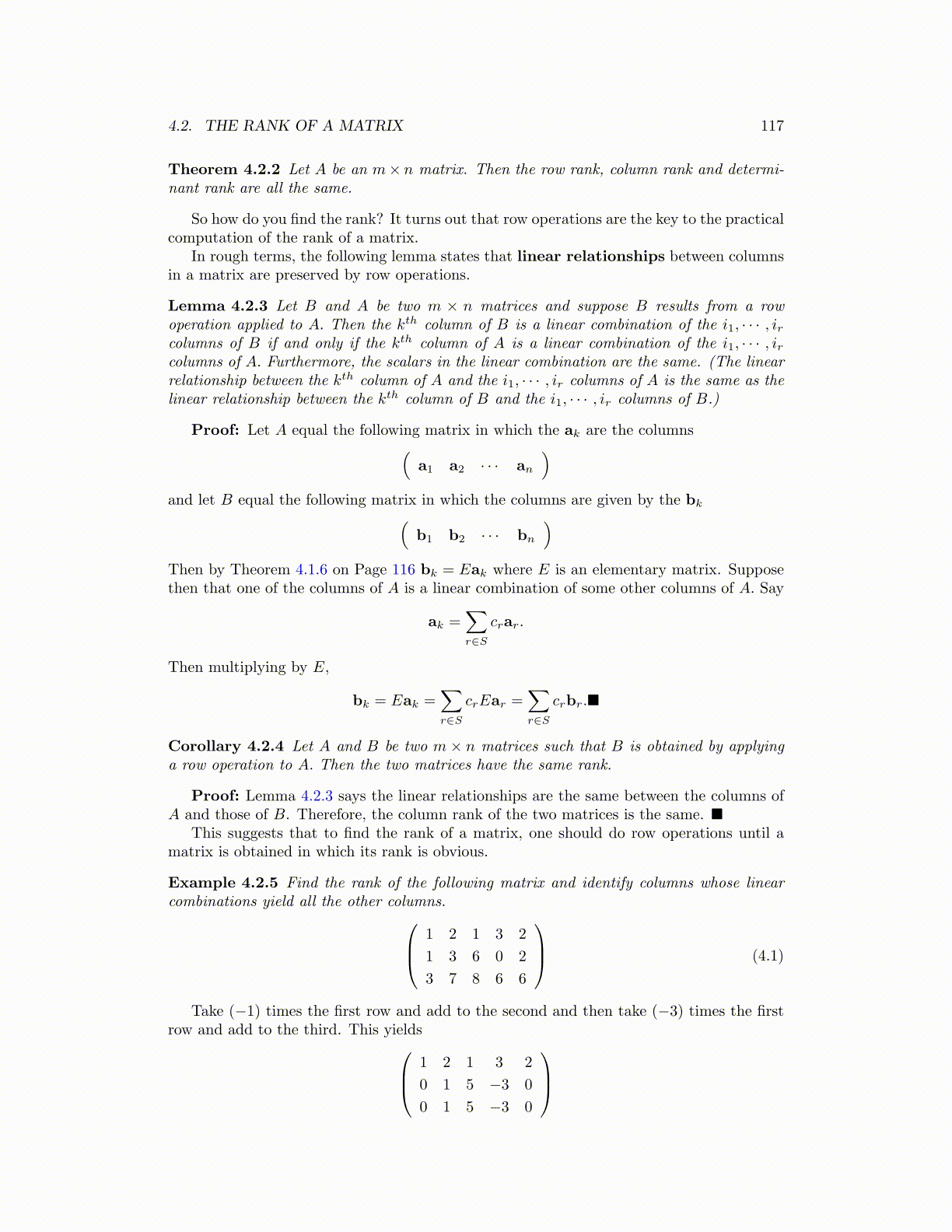
4.2. THE RANK OF A MATRIX 117
Theorem 4.2.2 Let A be an m× n matrix. Then the row rank, column rank and determi-nant rank are all the same.
So how do you find the rank? It turns out that row operations are the key to the practicalcomputation of the rank of a matrix.
In rough terms, the following lemma states that linear relationships between columnsin a matrix are preserved by row operations.
Lemma 4.2.3 Let B and A be two m × n matrices and suppose B results from a rowoperation applied to A. Then the kth column of B is a linear combination of the i1, · · · , ircolumns of B if and only if the kth column of A is a linear combination of the i1, · · · , ircolumns of A. Furthermore, the scalars in the linear combination are the same. (The linearrelationship between the kth column of A and the i1, · · · , ir columns of A is the same as thelinear relationship between the kth column of B and the i1, · · · , ir columns of B.)
Proof: Let A equal the following matrix in which the ak are the columns(a1 a2 · · · an
)and let B equal the following matrix in which the columns are given by the bk(
b1 b2 · · · bn
)Then by Theorem 4.1.6 on Page 116 bk = Eak where E is an elementary matrix. Supposethen that one of the columns of A is a linear combination of some other columns of A. Say
ak =∑r∈S
crar.
Then multiplying by E,
bk = Eak =∑r∈S
crEar =∑r∈S
crbr.■
Corollary 4.2.4 Let A and B be two m× n matrices such that B is obtained by applyinga row operation to A. Then the two matrices have the same rank.
Proof: Lemma 4.2.3 says the linear relationships are the same between the columns ofA and those of B. Therefore, the column rank of the two matrices is the same. ■
This suggests that to find the rank of a matrix, one should do row operations until amatrix is obtained in which its rank is obvious.
Example 4.2.5 Find the rank of the following matrix and identify columns whose linearcombinations yield all the other columns. 1 2 1 3 2
1 3 6 0 2
3 7 8 6 6
(4.1)
Take (−1) times the first row and add to the second and then take (−3) times the firstrow and add to the third. This yields 1 2 1 3 2
0 1 5 −3 0
0 1 5 −3 0